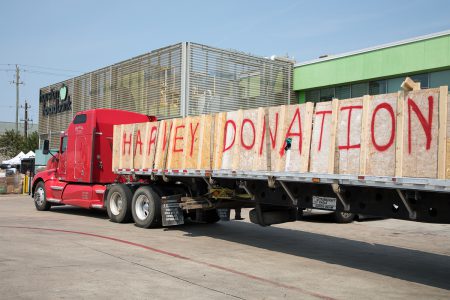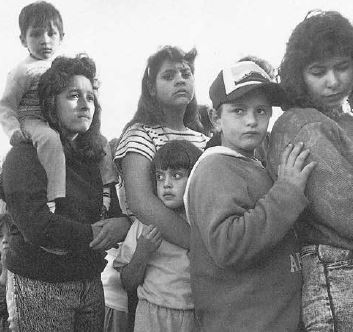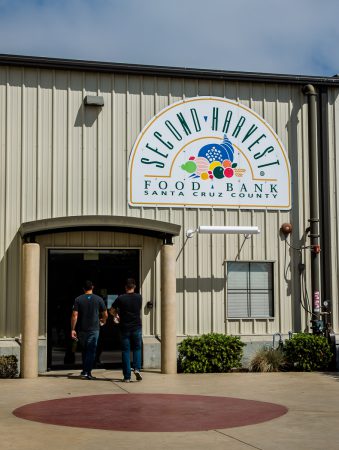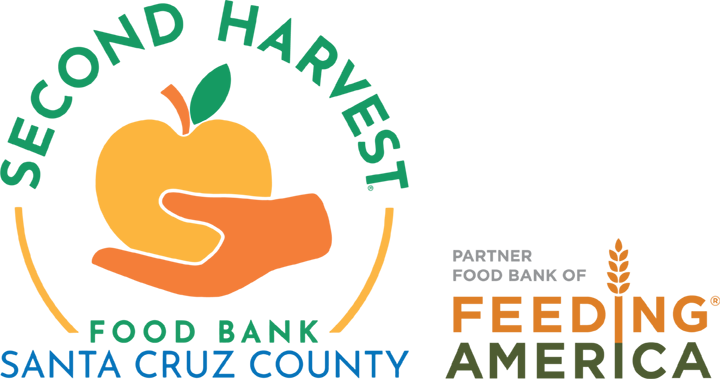Sometimes people aren’t aware of something until they need it. For many victims of disaster, like those of Hurricane Harvey, the aftermath revealed the existence—and critical importance—of community food banks.

Ever since Harvey made landfall on the Texas coast late last month, the Houston Food Bank has taken its place locally—and even nationally—among the names known for disaster assistance, like FEMA, first responders, the Red Cross, and the National Flood Insurance Program.
Thanks to social media, newspapers, and TV news, many more are now aware that food banks stand ready to spring to action when disaster strikes. In Texas, 20 food banks serve local residents in need, and the Houston Food Bank is at the forefront of Harvey relief, sending out trucks packed with food and bottled water across the region.
The same structure that allows the Houston Food Bank to serve 800,000 low-income people throughout the year makes them well suited to feed people in need in the wake of devastating floods: relationships with food donors; a warehouse and coolers stocked with fresh and non-perishable foods; skilled staff and volunteers; a fleet of forklifts and trucks to move the food; and a network of partner agencies on the ground to put the food in the hands of the people who need it.
Two hundred food banks across the country in the Feeding America network stand ready to do the same after a disaster in their area. In Santa Cruz County it’s Second Harvest Food Bank, located in Watsonville.
“People didn’t really know we existed before the [1989 Loma Prieta] quake.”
The oldest food bank in California and the second oldest in the nation, Second Harvest feeds nearly 55,000 people each month through its 200 partner agencies and nutrition programs. In many ways, it was another natural disaster that put Second Harvest on the map.
The 1989 Loma Prieta earthquake occurred just a few miles from its Watsonville operations, and caused casualties and damage throughout the San Francisco Bay Area. Second Harvest received as many food donations in the following two weeks as they normally did in a year.

“People didn’t really know we existed before the quake,” CEO Willy Elliott-McCrea recalled. That changed when residents saw the relief effort Second Harvest mobilized.
“The ’89 earthquake was a trial by fire for Second Harvest’s ability to respond amid catastrophe,” remarked Kevin Heuer, Chief Operations and Programs Officer. In the weeks after, the Food Bank served record numbers of people and helped the community pull through.
With the recent news about the devastation in Texas and the imminent landfall of Hurricane Irma in Florida, many at Second Harvest and across Santa Cruz County are wondering how they can help.
Given the distance from California, it doesn’t make sense to ship food and supplies, but Second Harvest reached out to Feeding America and offered to send two of their own—their Inventory Coordinator and one of their most skilled volunteers—to whichever food bank needs them most. If the offer is accepted, the Second Harvest will raise funds locally to support their travel.
For those looking to help flood victims immediately, Second Harvest encourages sending monetary donations directly to the food bank(s) closest to the need.
Heuer happened to visit the Houston Food Bank’s new facility last year. “It’s easy to visualize the scale of damage and level of assistance needed to recover,” he said. Recalling the ’89 earthquake, Heuer added, “We come by our empathy honestly.”
Even as Second Harvest Food Bank sources food from across the county and the state and distributes it to local children, seniors, veterans, the working poor, and anyone else in need, it is ever prepared to mobilize after the next natural disaster. After all, the region is subject to fires, floods, landslides, and, of course, earthquakes.

The U.S. Geological Survey concludes there is a 68% probability of a magnitude 7.0 or greater quake in the Bay Area in the next 30 years. (For comparison, the Loma Prieta earthquake was a 6.9.)
Second Harvest has a disaster plan in place, a special inventory of water, MRE’s, and other products, mutual aid agreements with other regional food banks, and plans for coordination with county emergency services.
“It doesn’t matter whether people learn about their food bank through volunteer opportunities, fundraisers, or media coverage of a natural disaster,” remarked Chris Ryan, Second Harvest’s Senior Manager for Communications. “What’s important is that food banks have the community’s support so they’re well positioned to help, in the aftermath of disaster and throughout the year.”
You can learn more about Second Harvest Food Bank at www.thefoodbank.org. To download a family emergency plan for your family, visit www.thefoodbank.org/plan.
